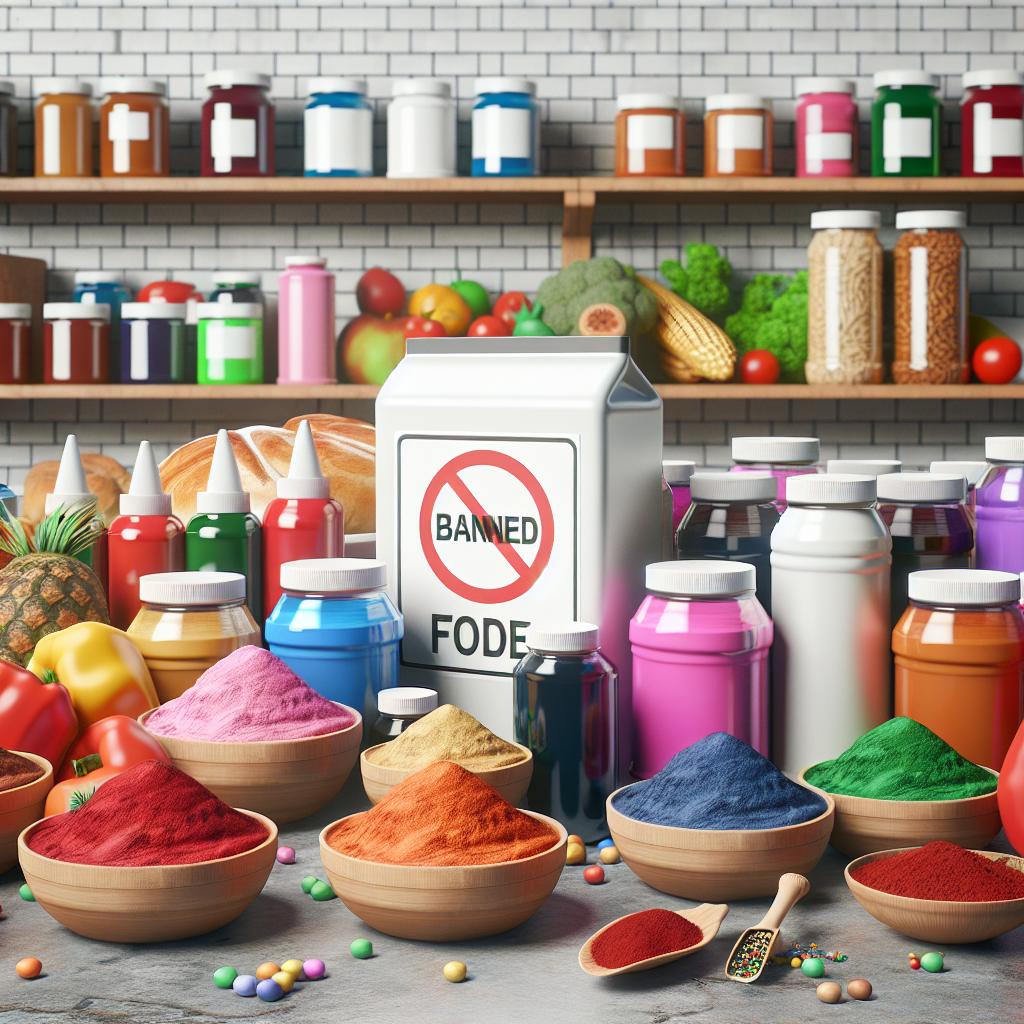

Colorful food dye ban.
In California, recent legislative actions have sparked renewed discussions about the potential risks posed by synthetic food dyes. On August 28, the California Senate passed a bill aimed at **prohibiting K-12 public schools** from serving foods that contain certain synthetic dyes. If this law is signed by the governor, it will restrict schools from offering items containing six specific dyes: Blue No. 1, Blue No. 2, Green No. 3, Yellow No. 5, Yellow No. 6, and Red No. 40.
The debate around synthetic food dyes has been ongoing for decades. Between 1963 and 1987, the Food and Drug Administration (FDA) approved nine synthetic dyes for use in foods in the United States, and the agency maintains that these dyes are safe. However, some studies have raised alarms regarding their impact on children’s behavior, particularly concerning attention issues.
The controversy traces back to the 1970s when a pediatric allergist in California suggested that removing artificial colors, flavors, and preservatives from the diet could significantly help children with Attention Deficit Hyperactivity Disorder (ADHD). This claim stirred a lot of interest among both parents and medical professionals. However, Dr. L. Eugene Arnold, a professor emeritus of psychiatry at Ohio State University, describes that original claim as **exaggerated**.
Following the initial claims, many researchers began to examine the role of synthetic food dyes in behavior and ADHD over the following years. According to Dr. Arnold, much of the research conducted in the 1980s largely “**debunked**” the notion that strict elimination diets significantly benefitted children diagnosed with ADHD. Consequently, many medical experts concluded that these diets were ineffective.
However, scientists continued to focus their research specifically on synthetic food dyes, leading to various trials and investigations. These studies have sought to determine whether these artificial colors might be linked to negative behavioral effects in some children. While not all studies have reached the same conclusions, there seems to be a growing body of evidence that suggests potential links between synthetic dyes and increased hyperactivity in certain individuals.
The recent bill passing at the Senate brings a significant shift in the approach towards food safety within California schools. Many advocates for children’s health welcome the bill, asserting that **prohibiting these synthetic dyes** could lead to healthier food options for children. There is also a growing concern among parents about the long-term health implications of consuming artificial additives, and the public response has been largely positive.
On the other side of the debate, critics argue that painting all synthetic dyes with the same brush might not accurately reflect their safety across the board. Some believe there is no conclusive evidence proving that these dyes are harmful, and that decisions should rely on well-documented scientific evidence rather than fear-based beliefs.
As the bill heads to the governor’s desk, discussions about the use of synthetic dyes in schools and broader food consumption are likely to continue. Should the law be enacted, it might not only impact school menus but also instigate more comprehensive studies on food dyes and their long-term effects on the health and behavior of children.
With the debate reignited, parents, educators, and health experts are left to grapple with what this means for children’s nutrition and behavior going forward. As researchers continue their studies, many look forward to a clearer understanding of how synthetic food dyes may affect young minds.
News Summary A new AI-powered paywall has been launched, showing a 6% rise in average…
News Summary The California Bar Exam has faced scrutiny after it was revealed that many…
News Summary President Trump’s recent announcement of a 145% tariff on Chinese goods has sparked…
News Summary New Jersey is battling a large wildfire called the Jones Road Wildfire, which…
News Summary A coalition of twelve U.S. states, led by New York, is taking legal…
News Summary A SporTran bus exploded in Shreveport on April 16, 2025, after the driver…